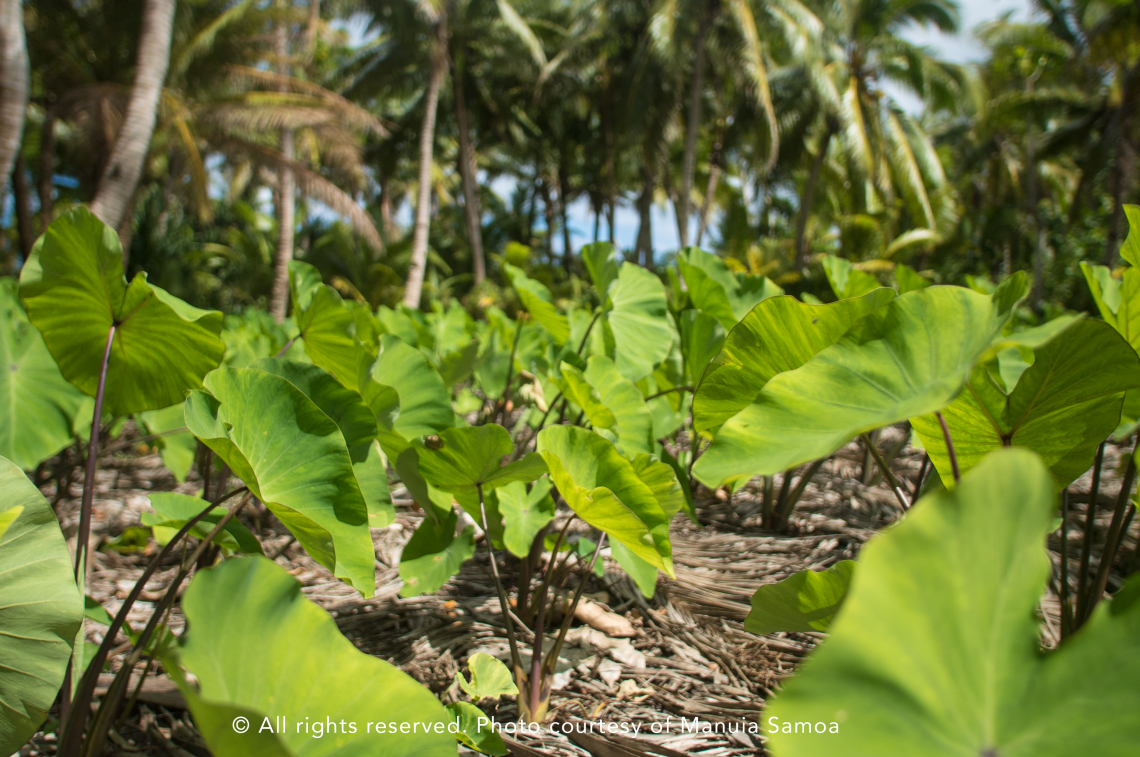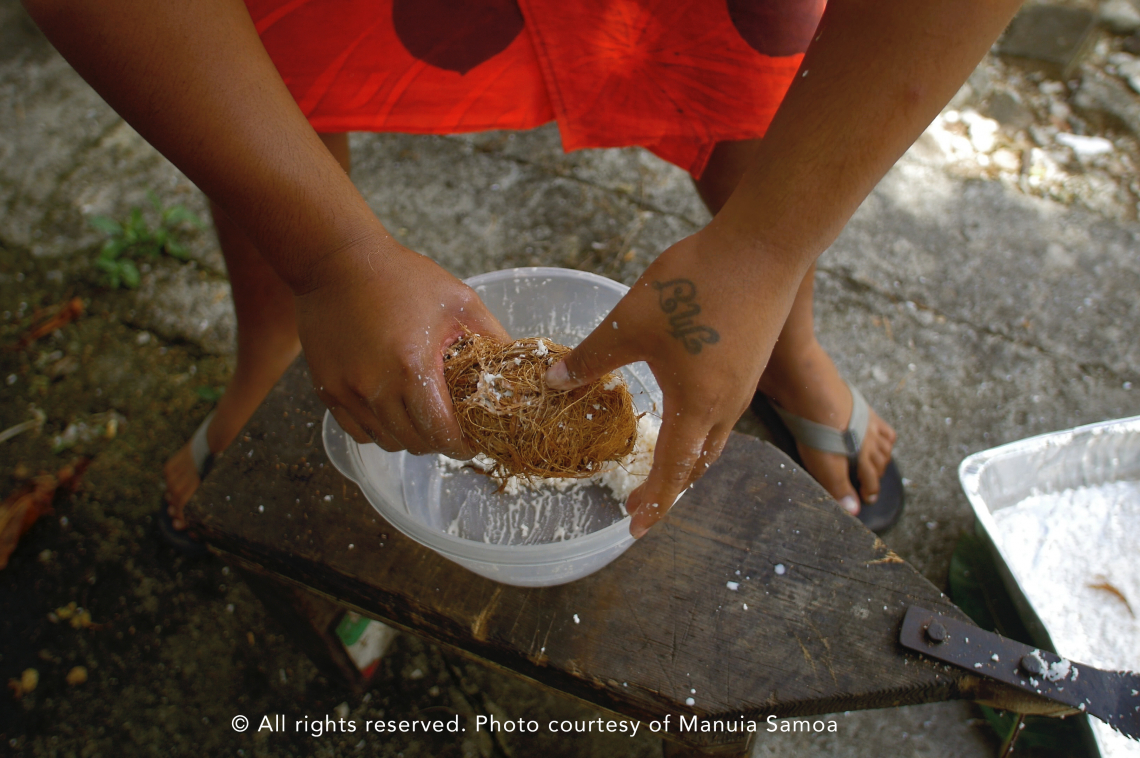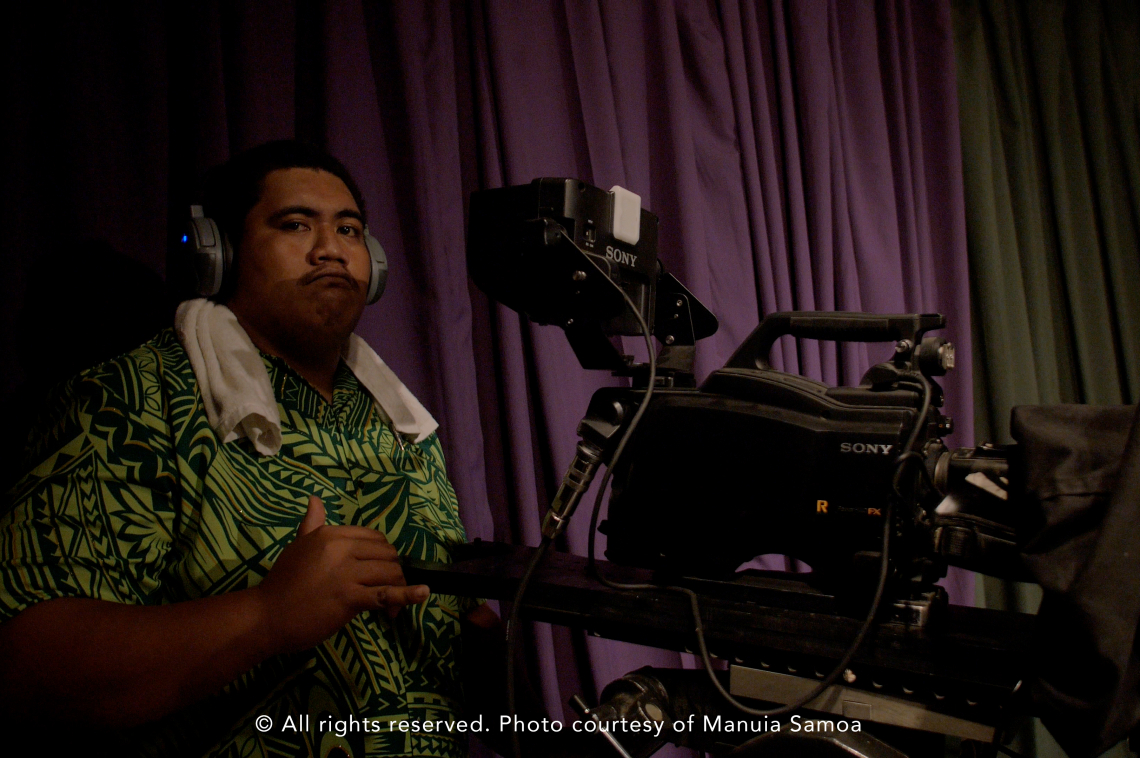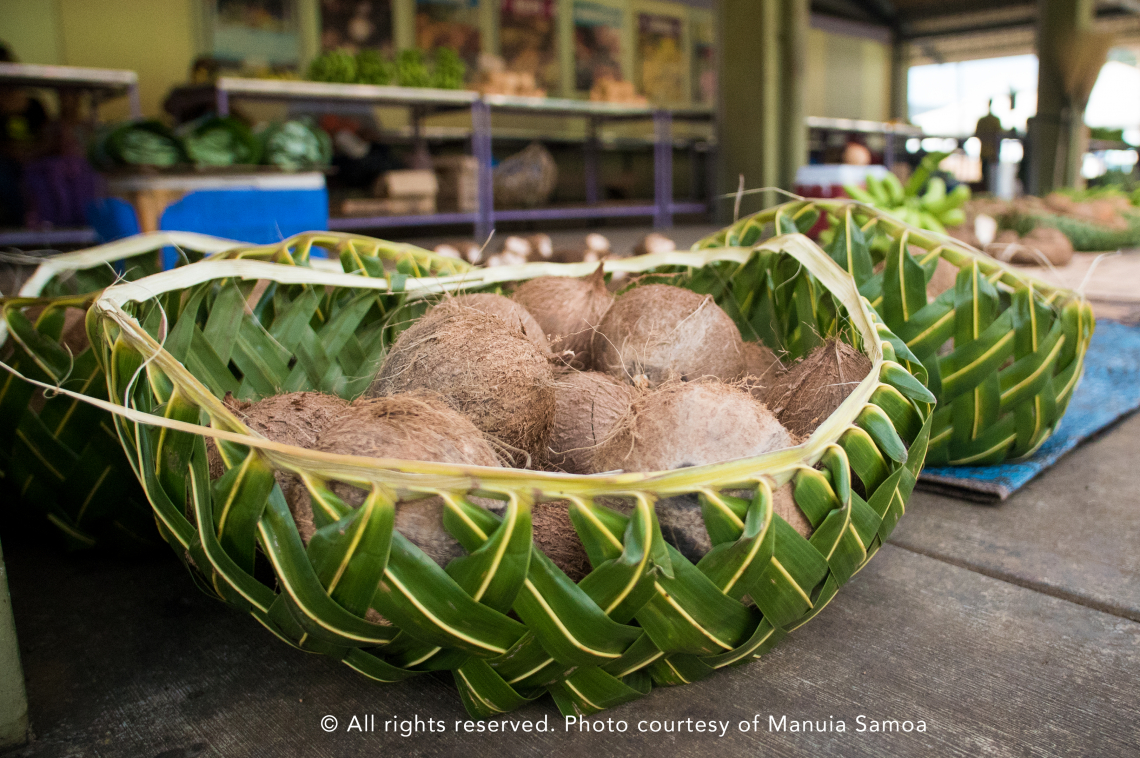



Renowned filmmaker Queen Muhammad Ali, great-granddaughter of Eastern American Samoa’s late Paramount Chief Tuli Le’iato, is helping to heal the obesity and diabetes epidemics her island faces with documentation, archiving, and e-learning of indigenous Samoan healing arts, natural herbal medicines, plant-based nutrition, and the creation of a social wellness hub in her village of Faga’itua that will serve as an artistic resource for a healthier community. 81 percent of Samoa's land area is communally owned by familial bands.
Queen contributed the following story to ArtPlace just over a year ago, and she will present at our 2019 Annual Summit later this month. As our blog explores issues of healing this May, we are pleased to highlight Queen's ongoing work to facilitate revived health and cultural traditions in her community.
There was a time not long ago when our houses (Fales) were built with no walls on purpose. Shared knowledge was an integral part of our daily life. An isolated communal society where the men cooked the family dinner in earth ovens daily. On our island paradise, the injured or sick were healed by elder women (Fofos) with ancient medicinal knowledge of local herbs, flora, body mechanics, nutrition, and internal healing. Our diet was Fish, Coconut, Taro, and other vegetables...everybody was skinny. These were the Islands of Samoa before we were forced to cede to the United States.
Before we built walls.
Today, the island is significantly different from what it was a century ago. These days, alien processed foods and non-indigenous meats are consumed, contributing to our deadly epidemic of obesity: a leading preventable cause of death here in the Pacific. (Cows, Chickens, Pigs, Alcohol, and Processed Sugars were brought to Samoa by European sailors in the mid 1800s.) A major issue is our inability to transfer knowledge from Elder to youth.
The idea to produce teaching materials that incorporate video recordings of actual experts was an obvious next step. By teaching basic filmmaking techniques, we are arming the community with the skills to produce training videos. Multimedia lessons enable students of present and future generations to see, mimic, and engage, providing as close as possible the real-life resources that students have had in the past but otherwise would not have in the future with the Elders of today.
Manuia Samoa
Manuia Samoa is a communal project led by filmmakers, educators, health experts, Matai Chiefs, government officials, architects, curators, and archivists. Collectively we have begun the arduous labor of locating, identifying, and documenting authentic Samoan pharmacopeia experts who can demonstrate our phytotherapeutic healing arts which are almost on the brink of extinction. We will house this history in a modern social wellness hub built by the community it serves. We are reverse engineering our present state and re-adopting our original ways through e-learning.
Because of our geographic isolation from the rest of the world, Manuia Samoa is a unique project. Our access to technology is minimal, with some slow internet and other undeveloped infrastructure. Our airport can only accommodate two international flights a week. To date, only a few Elders are qualified to teach our medicinal arts, and no one is documenting these procedures in a systematic way.
In 2013, the first year of our multimedia project, we hoped to create a set of lessons that would serve a one-semester course. Those intentions, however, proved unrealistic. There was no model that we could follow for the multimedia lessons, and archival technology here is almost non-existent. In order to archive and play a rapidly growing collection of HD and 4k resolution video instructions, we decided to deploy a Raid 5-10 Plesk server built on a NAS/DAS using Thunderbolt 3 technology. This gives future students the ability to access the same video files simultaneously on several hubs within our facility and securely via the internet. Routine backups will also be a major ritual within our preservation strategy.
In addition to the video classes, we are developing digital and printed workbooks. A full curriculum will be provided as well. Each of the programs at Manuia Samoa share the following goals:
- Extensive, innovative healing documentation that includes the creation of written and video archives of Native Samoan Fofos, thereby preserving for the future as much material as possible in a variety of formats.
- Use of those documentary records as the basis for creating an array of teaching materials that will help preserve and revitalize these arts.
- Use of the latest technology to create both documentary records and teaching materials, and a multidisciplinary approach to the creation of teaching materials that combines methods and insights from ethnobotany, anthropology, psychology, and education to produce the most effective learning tools possible.
Stay tuned.





